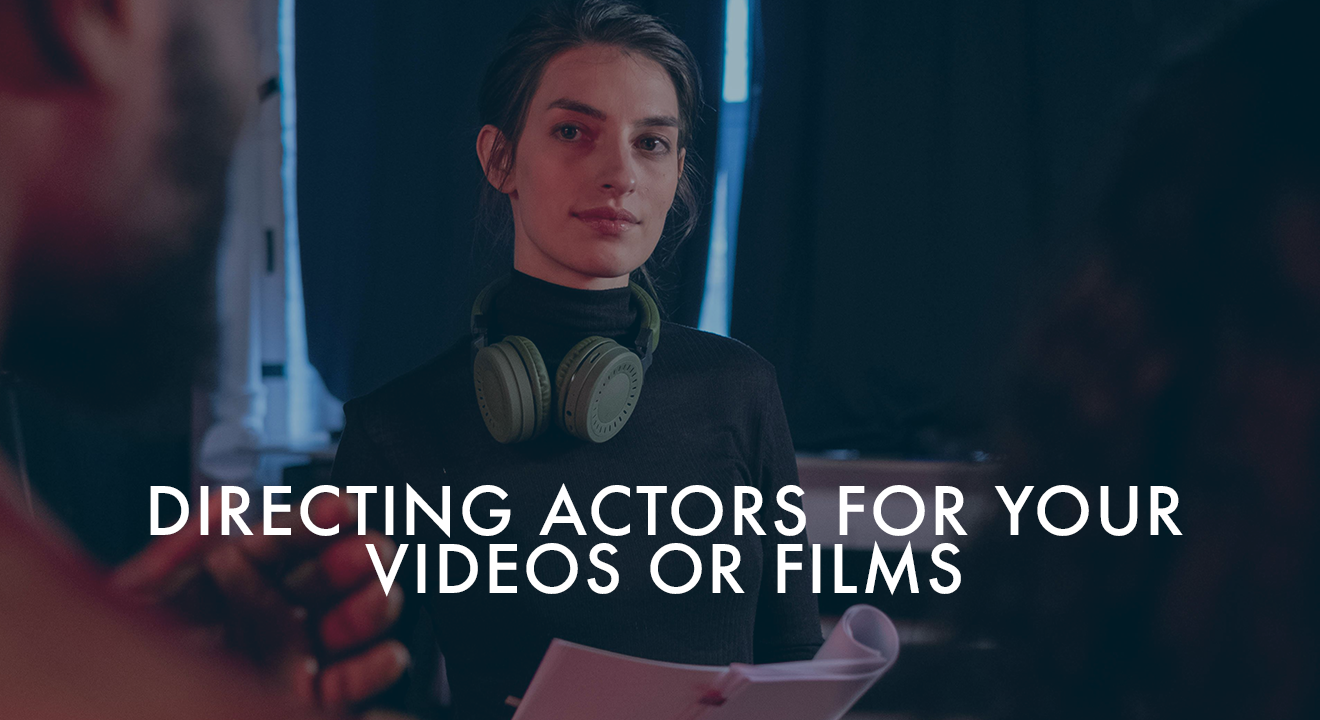Directing Actors for Your Videos or Films Matters Big Time
Picture this: You’re at a local film screening, excited to support a fellow filmmaker. The lights dim, and the first scene begins. But something feels off. The actors—unknown faces—deliver stiff, uninspired performances. But instead of being captivated by the story or plot, you’re looking at your phone and counting down the minutes until the credits roll. This is why directing actors for your videos or films is the make or break moment for any project.
This scenario is all too common, especially in independent films and low-budget commercials. Poor performances can sabotage an otherwise compelling story. That’s why directing actors for your videos or films is one of the most critical skills a filmmaker can develop. Whether working with experienced screen actors or first-time performers, your ability to direct them into believable, emotionally resonant characters can make or break your project. This is true for both filmmaking and creating branded content for your business.
Directing Friends, Family, or Employees as Actors in Your Videos or Films
Too many indie filmmakers and companies rely on friends as talent to save on the budget. While this tactic can undoubtedly keep your costs low, it often comes with many challenges, mainly at the expense of the project’s quality. People not trained for the camera usually tense up or, even worse, overact. These two challenges can distract from your story and make your project look amateurish. This said, with a bit of work, you may be able to make the best of your casting limitations and get people ready for the screen.
Let’s explore.
First, directing actors for your videos or films requires patience, coaching, and a strategic approach.
For example, helping your actors focus on why their character reacts to something rather than how they should respond to something works so much better for authenticity. Helping your actors concentrate on their emotions rather than the literal direction of a script or teleprompter can dramatically improve the outcome. But doing these things comes at the cost of preparation.
How to Guide Performances with Subtlety
One of a director’s most significant mistakes is giving result-driven direction—telling actors to “look happy,” “look scared,” or “be angry.” Instead, focus on cause-driven direction. Help your actors tap into the emotions behind their characters’ reactions.
For instance, let’s say we have a scene where a mother confronts her son after he wrecks her new car. Her anger over the car could stem from many reasons, including fear for his safety, financial stress, or frustration over a vehicle she loved. However, in most cases, the actress would be given a direction like, “Be angry at him.” First, that is a horrible direction and very unuseful to the actor overall. A person cannot feel something on command. When this is asked of them, actors will immediately draw from some cliche they saw or some reference. At that point, they are characterizing the emotion you need. Instead, offer the talent a direction like this:
“That car was the last gift your husband gave you before he passed away. He loved you very much. Now he’s gone, along with the last gift he gave you.”
Obviously, this direction can conflict with the reality of the character or story, and you can adjust your little “backstory lie” accordingly. The point here is to give the actor something deeper to think about instead of some stupid emotional cue. By exploring these deeper motivations, you encourage actors to feel the moment rather than act it, and you will usually capture some really cool stuff on screen.
Pro Tip: Use exercises like walking through a door naturally to help actors eliminate exaggerated movements and focus on authenticity. Micro-expressions—small gestures like a flicker of an eye or a breathy exhale—can say more than grand gestures ever could.
Transitioning Stage Actors to Screen Performances
Stage actors often struggle with the shift to film, where performances must be subtle and intimate rather than broad and exaggerated. Directing actors for your videos or films means helping them tone down their delivery without losing emotional depth.
Tips for Adjusting Stage Actors:
- Scale Down Movements: Use close-ups to capture micro-expressions and natural gestures.
- Focus on Subtext: Encourage actors to focus on what’s underneath their lines rather than reciting them.
- Prepare for Start-Stop Filming: Rehearse technical cues like hitting marks and maintaining continuity between takes.
According to filmmaker Michael Rabiger, author of Directing: Film Techniques and Aesthetics, preparation and rehearsals are key to building confidence and trust between directors and actors.
Avoid Type Casting
Typecasting is a standard shortcut in filmmaking but can also be limiting. Imagine casting a rugged biker type as a sensitive, soft-spoken father. Playing against expectations surprises audiences and challenges actors, pushing them to explore new dimensions.
Take Alan Rickman’s portrayal of Hans Gruber in Die Hard—a villain, unlike the stereotypical action-movie heavyweights of the 1980s. Casting him against type created a layered and memorable antagonist.
When directing actors for your videos or films, consider experimenting with unconventional casting choices to add depth and unpredictability to your story.
Building Trust and Confidence While Directing Actors in Your Videos or Films
Actors, especially new ones, need a safe and collaborative environment to perform their best. Stress and insecurity can kill authenticity. Directing actors for your videos or films starts with building trust through open communication, rehearsals, and simple gestures like sharing meals or casual conversations.
Strategies to Build Actor Confidence:
- Workshops and Rehearsals: These sessions test different approaches and explore character dynamics.
- Active Listening: Ask questions about the character’s backstory and motivations to get actors emotionally invested.
- Encourage Experimentation: Allow actors to try different tones and movements to find what works.
- Provide Emotional Maps: Break scenes into beats and emotional transitions to guide actors without over-directing.
The Lens Never Lies, Especially on the Close-Up
Close-ups are like magnifying glasses on your actors. They can elevate emotion or amplify a mistake. Overacting in these moments can ruin a scene. When directing actors for your videos or films, emphasize restraint during close-ups. Encourage actors to focus on their thoughts instead of trying to physically do something.
For example, instead of asking an actor to “look scared,” give them an objective—“Imagine who will take care of your cat if you die today!” This shifts their focus from performing an emotion to feeling something, which is subtly what the close-up is looking for.
The Right Time to Pull Out Result-Driven Direction
Say you’re doing a commercial where the actor needs to simply turn to the camera and smile. This would be a moment in which you don’t need to get too philosophical with your actor. Hopefully, the smile is organic and doesn’t come off as cheesy or creepy, but sometimes, you must keep the direction super simple. This is typically the case when I shoot commercials for brands.
There may also be instances where you are doing a stunt scene or a complicated camera move that needs visual effects added. In these cases, keeping your actors in the box is best, and you should not let them deviate too much from what the blocking needs. Directing actors for your videos or films may need instructions like “grab the milk and take a long sip.”The point here is knowing when to use it!
Final Thoughts on Directing Actors for Your Videos or Films
Whether you’re shooting indie horror films, branded commercials, or short films with your mates in the backyard, your ability to direct actors to be real people once the camera starts recording can improve your work. Now, it is impossible to put all of my directing experience into one blog post, so this is why I am currently working on a new book that will hopefully help indie filmmakers and up-and-coming actors find some grit. My last takeaway today is to keep your directing focus on assisting the actor to discover their real feelings. This doesn’t have to be some method acting mumbo-jumbo, just using their instincts and experiences as real humans to create believable moments you can steal with your camera.
Okay, that’s all I’ve got for you today. Onto something else!
For more insights on our filmmaking check out our page here.
I hope all of this helps!
-Kelly



